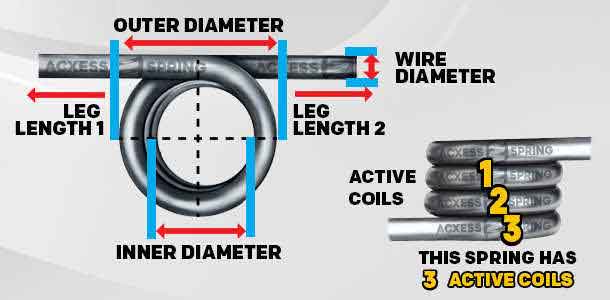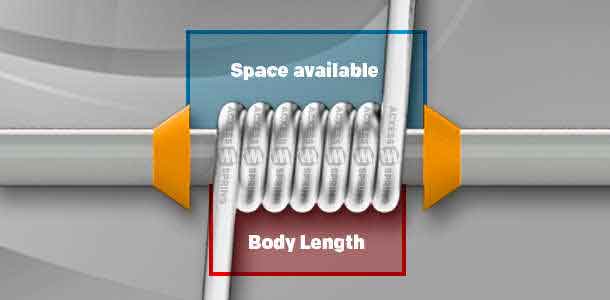Torque Springs
Definition: Torque springs are close wound coil springs which eject a radial force thus producing torque instead of a linear load. Also known as torsion or torsional springs.
Radial degrees of deflection per amount of force is torque. It is what we know as working loads on linear springs such as compression and extension springs.
To find out whether a specific torsion spring design will work in your application, you must keep in mind 3 things:
- Space
- Environment
- Torque
First and foremost, you must determine your torque spring’s direction of wind. This will determine in which direction your spring will deflect; clockwise or counter-clockwise. Once that is determined you must look into space and environment for they will determine both your spring’s physical dimensions and material type. Since most torsional springs are installed with a shaft going through their inner diameter, this is the first dimension you must have a look at. Take measurements of the available space between the shaft and the objects surrounding the spring to find out tolerances for your spring’s diameters. This includes wire diameter, inner diameter, and outer diameter.
Then, you must measure the space designed for your spring’s body. In the image to the right, you’re able to see that the spring is located over a shaft but the shaft has two pieces limiting your torque spring’s length. This space will help us determine the body length and amount of coils. Determining the active coils depends on this limited space and the wire diameter because body length is calculated by multiplying the sum between the amount of coils plus one, by the wire diameter.


Material type will be determined by the environment your spring will be facing. Whether it is high temperatures, moisture, or hazardous environments, you can determine your torque spring’s material type based on this data and the properties of the spring materials that’ll help it complete its function in your device or mechanism.
The next step is calculating the required torsion spring rate for your spring design. A torque spring’s rate is measured in inch-pounds per degrees of travel (newton-millimeters per degrees of travel). This is done by diving the torque by the amount of degrees you expect your spring to travel under such torque. This calculation will tell you the rate per degree your spring will need in order to function as needed within your application.





 Español
Español